By Russell Ramtahal, Manager & Andrew Peipers, Associate Consultant
October 2021
In this article, experts at Mather Economics discuss the importance of strong wine club member retention and suggest data-driven churn campaigns as a means to optimizing this key performance indicator. Then, they analyze a case-study from a live client to support our suggestions and illustrate the short- and long-term revenue benefits of working with Mather Economics to conduct micro-targeted churn campaigns.
Customer Segmentation in the Wine Club
Highly regarded by locals and non-locals alike, small-to-midsized wineries are uniquely positioned to serve customers across the United States through their wine clubs. Because opportunities for retail presence are competitive and not always cost-efficient, wineries have considerable opportunity to grow their Direct to Consumer (“DtC”) business. While the tasting room is a healthy source of DtC revenue, the accelerated digitalization of the modern economy has compelled winery owners to adjust their DtC strategy. Wide-reaching DtC business channels, namely, wine clubs, have therefore become an important component of overall winery revenue.
Because of the ever-increasing impetus on wine clubs, club managers are doing their utmost to improve club performance, which is driven primarily by member management. Through our decades-long experience of subscription management, Mather Economics has considerable understanding of the three pillars of successful subscriber/member management: acquisition, retention, and reacquisition. Within each of these pillars, wineries can pull multiple levers to improve performance. Pricing strategy is perhaps the most common lever, but relationship management is also important and often-overlooked. Wine clubs can best develop and maintain member relationships by way of segmented touch points (e.g., phone calls, post cards, emails, etc.).
Mather Economics has extensive exposure to customer segmentation, with applications in pricing and relationship management. Regarding the latter, we employ advanced econometric modeling and sophisticated data-science to predict customer propensity to act. In the case of churn analytics, we model using historic client data and score member likelihood to cancel their membership (churn). Segmented churn scoring allows us to develop micro-targeting campaigns and monitor performance across churn segments. These insights enable us to recommend prioritized messaging strategies for our clients.
Because consumer-segmented analytics have been largely inaccessible to the wine industry, wine club managers have typically employed a “blanket approach” to combatting churn. That is, they send touchpoints to their member base without member-segmentation. However, such a strategy has a couple of problems. First, certain touchpoints are high-cost, such as post cards. By implementing an unsegmented (“blanket”) approach, wineries incur high expenses with little return. Another problem is that managers may promote churn in sending touchpoints to members who do not need to receive one. We call this “poking the bear,” as the touchpoints remind such members of their membership and thus encourage stops.
Implement the Depletion Optimization Tool Today
The Importance of Retention
Amongst the three pillars of subscription/member management, retention strategies have the most return on investment. The value of a retained club member greatly exceeds that of an acquired one because it is costly to bare upfront acquisition costs. In fact, Amy Gallo, writing in the Harvard Business Review, notes that “… acquiring a new customer is anywhere from five to 25 times more expensive than retaining an existing one.” This is particularly true for wineries who do not incorporate data analytics into their marketing. From a revenue standpoint, strong retention is manifest in larger spend volume and higher average spend behavior.
Introducing the Mather Retention Strategy
Given our expertise in subscription/member management, Mather Economics was well positioned to offer our experience and analytical capabilities to a Washington State winery. We helped identify club-member retention as our client’s primary focus, and we are utilizing member-segmented micro-targeting to improve retention and achieve our client’s business goals. We helped our client mitigate wasted time and resources by designing specified churn campaigns to implement prior to quarterly allotment periods. Using specialized econometric modeling, we predicted churn likelihood on the member level. Working with the client’s cost constraints, we utilized varying touch points to communicate with specific club members based on their likelihood to churn. To measure campaign performance, we conducted A/B testing by identifying controls to not receive a touchpoint. By doing so, we were able to compare against the baseline and discern the relative impact of the touch point on retention.
We helped our client mitigate wasted time and resources by designing specified churn campaigns to implement prior to quarterly allotment periods. Using specialized econometric modeling, we predicted churn likelihood on the member level. Working with the client’s cost constraints, we utilized varying touch points to communicate with specific club members based on their likelihood to churn. To measure campaign performance, we conducted A/B testing by identifying controls to not receive a touchpoint. By doing so, we were able to compare against the baseline and discern the relative impact of the touch point on retention.
Our overall strategy is to conduct a series of tested campaigns, all of which incur incremental revenue, to ultimately develop a full-time churn strategy, as illustrated in the following timeline:

Figure 1: Campaign testing timeline
The timing of our campaigns is particularly important because the highest club member churn is just before an allotment period (see figure below). We want to prevent churn during the period of highest churn because each incremental member retained through an allotment period carries a substantial revenue benefit. Over multiple testing campaigns with our client, we have micro-targeted the majority of active club members with phone calls, post cards, emails, and combinations of those. The results of these campaigns help inform our long-term decisions, which will allow us to implement and refine our business-as-usual (BAU) strategy in the future.
As illustrated in the graphs below (Figure 2 and Figure 3), our client’s historic wine club stop rates and sales have peaked during allotment periods.
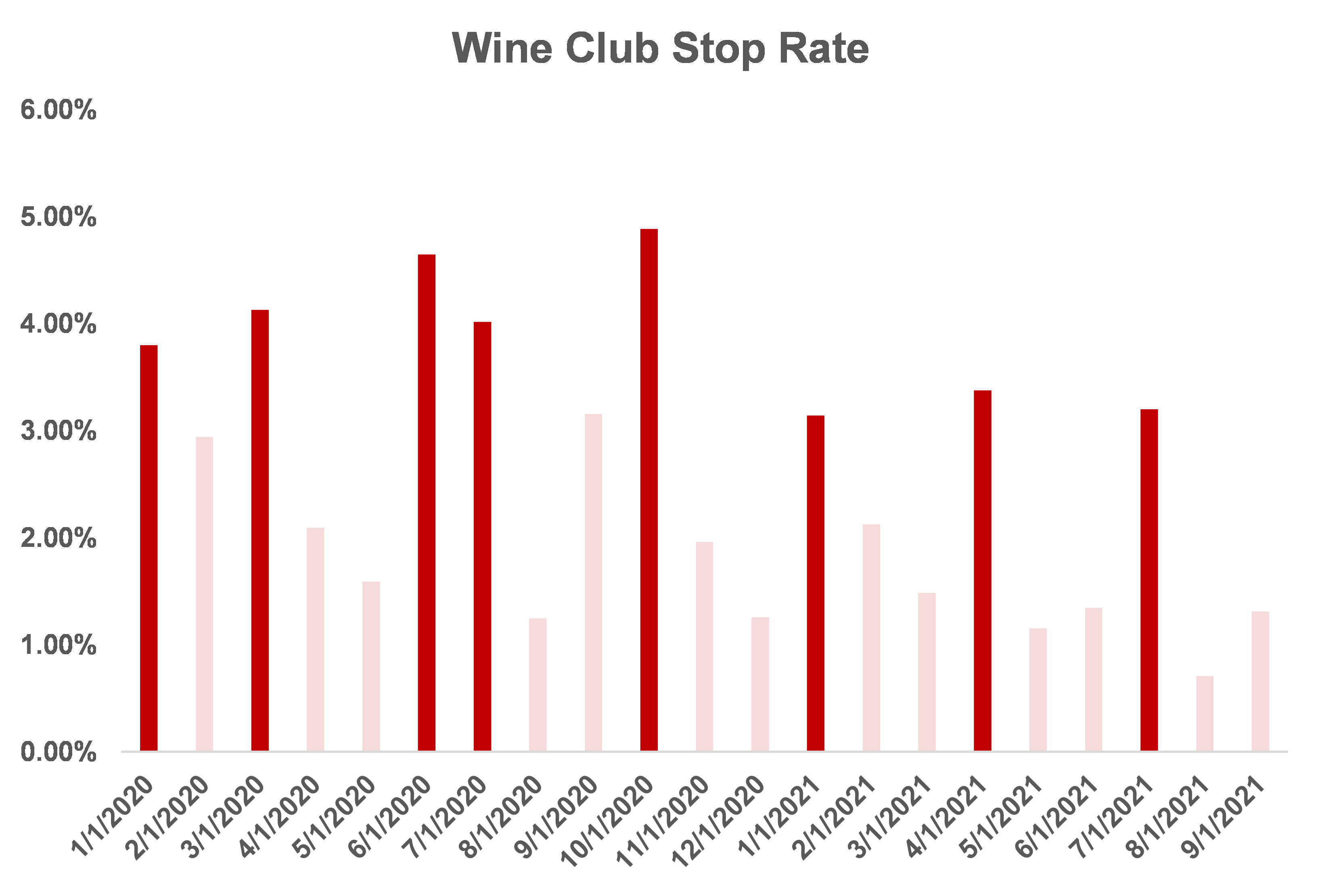
Figure 2: Wine club stop rate
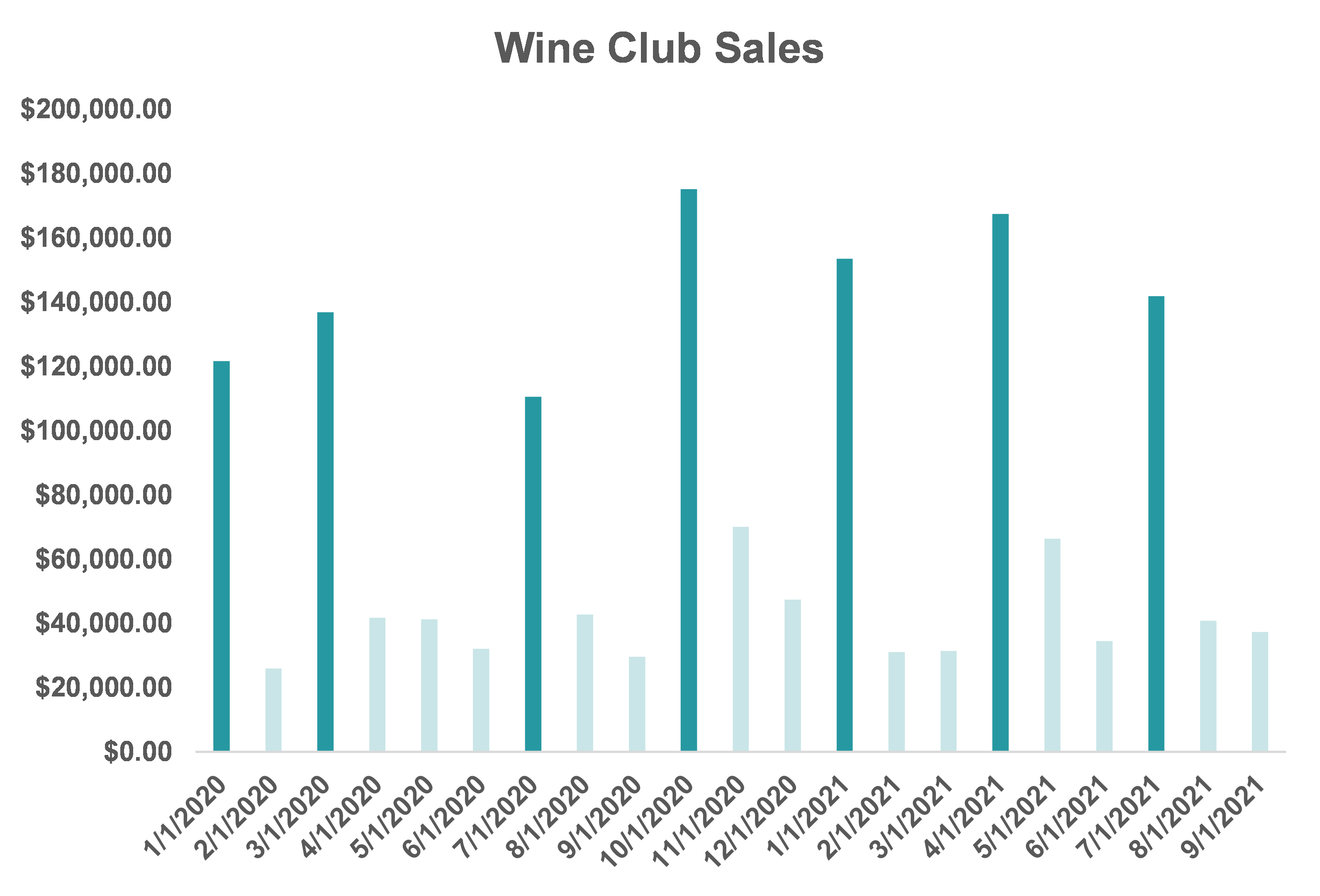
Figure 3: Wine club sales
Case Study – Client’s Winter 2021 Campaign
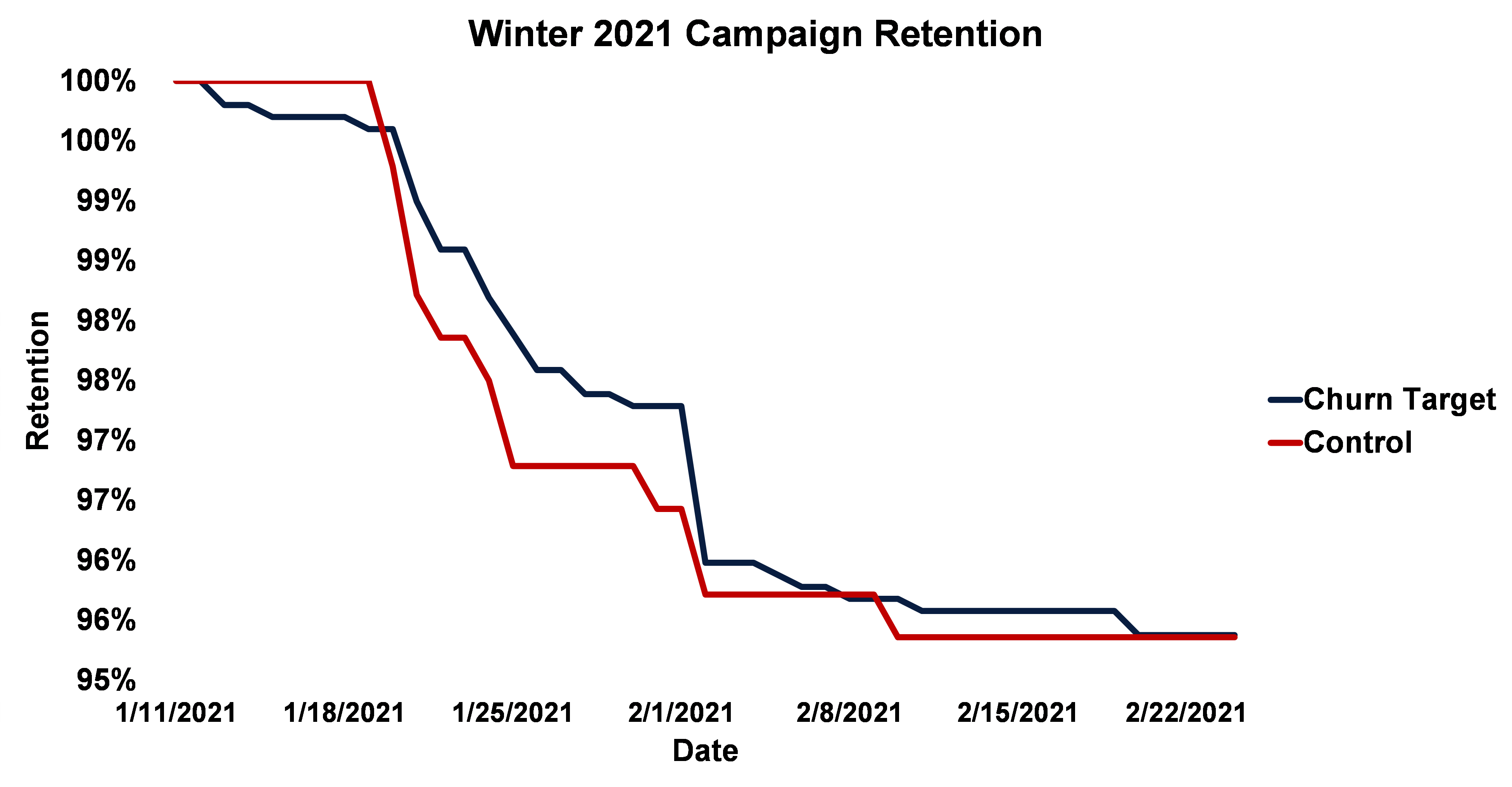
Figure 4: Winter campaign retention
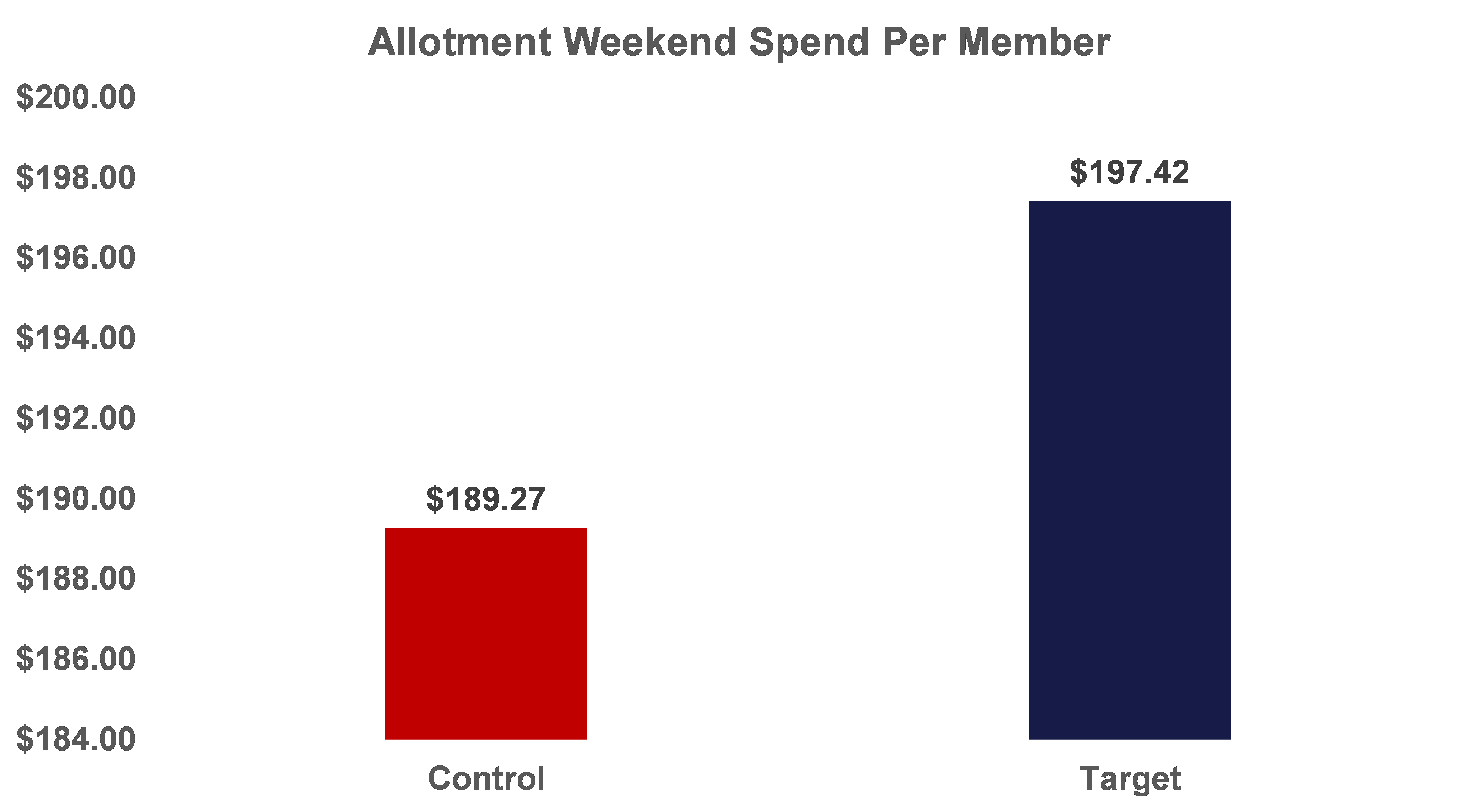
Figure 5: Allotment weekend spent per member
Reporting and Return on Investment
Before reaching the Mather-suggested BAU phase, we provide succinct and descriptive reporting during and after the testing campaigns. The reports equip us to suggest further testing points, thus contributing to our development of a long-term business strategy. A key insight from the results below is that only phone calls perform well amongst the third churn quartile, while the other touch points may encourage churn for similar members. Amongst those less likely to churn (churn quartiles 1 and 2), emails perform best, primarily in the second quartile. Furthermore, the results below encouraged us to hone in on post cards amongst those most likely to churn. By analyzing findings individually and synthetically, we were able to develop a micro-targeting strategic plan, which we are able to further test in the upcoming churn campaign.

Figure 6: Overall campaign performance report
The results from just two campaigns have not only been important for long-term strategy, but also have shown substantial incremental revenue generation. Revenue from strategically-timed churn campaigns is driven by two factors: retention and spend behavior. If a member retains through an allotment, the member is not only more likely to spend, but also spends more, on average, than they would have otherwise. One of the most valuable features of a data-driven churn campaign is that even if a churn touchpoint does not “save a stop,” the touchpoint often encourages enhanced spend behavior around allotment.
After completing recently-upgraded, historic reporting, Mather Economics found that our client earned incremental revenue, even in the testing phase. After three months of a previous micro-targeting testing campaign, our client earned roughly $16,000 in incremental revenue.
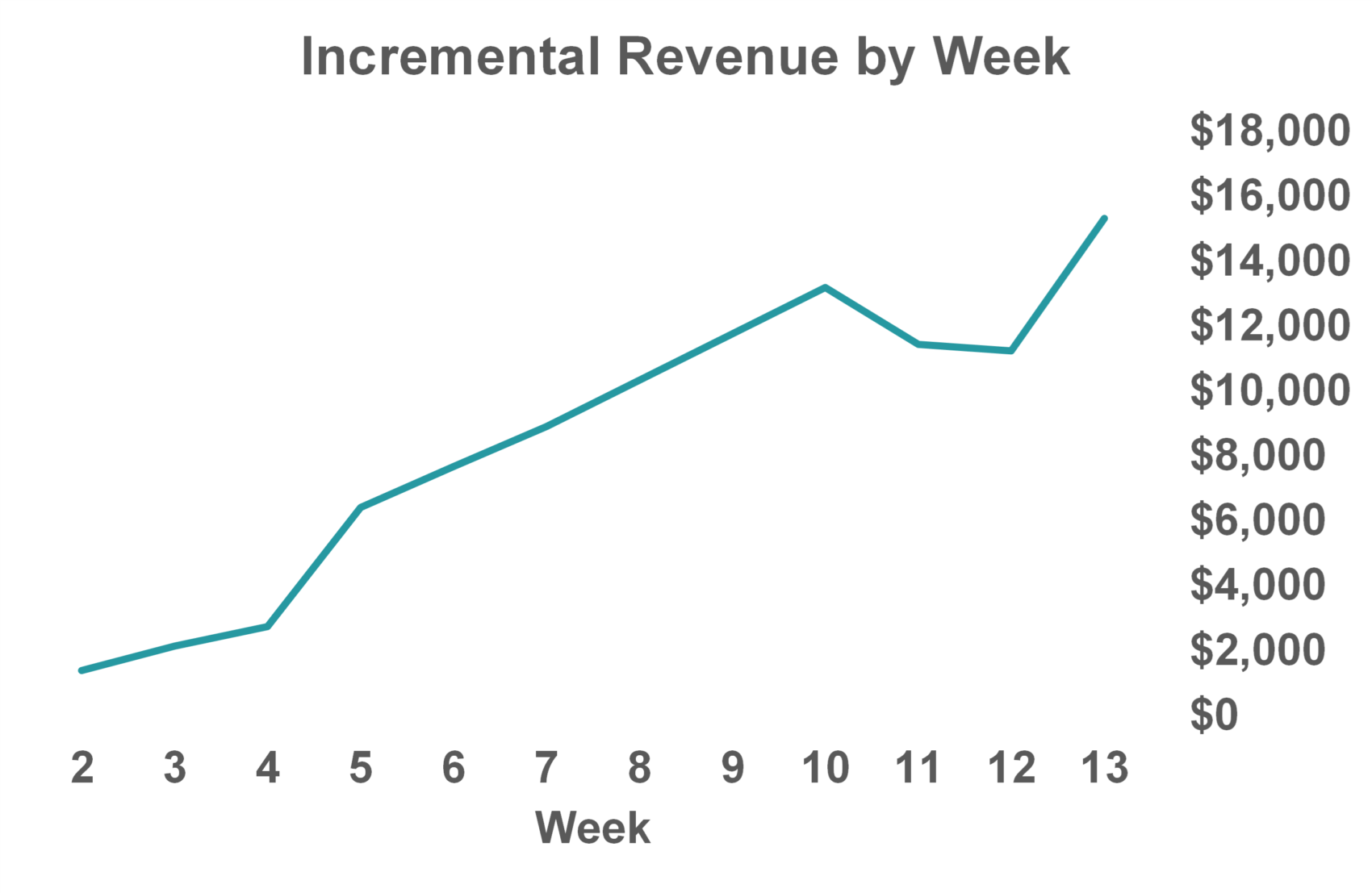
Figure 7: Weekly incremental revenue
More information
Because small-to-midsized wineries accrue more than 90% of consumer revenue from their DtC business, it is paramount to incorporate sophisticated analytics into your winery’s long-term strategic plans. Doing so will allow you to efficiently allocate resources and stay ahead of the competition. Consumer preference towards subscription-type businesses increases month-by-month, and Mather Economics is well positioned to help you take full advantage of this macroeconomic trend. By taking the data and analytical “heavy lifting” off of your wine club manager, Mather Economics allows you and your manager to have more time to do what you do best: produce quality wines and entertain club members.
Please email us at info@mathereconomics.com for further information on how we can help your winery.

